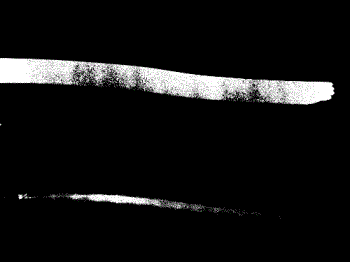Compact fluorescent bulbs
By revdauphinee
@revdauphinee (5703)
United States
January 5, 2008 3:16pm CST
Compact fluorescent bulbs, the twisted looking replacement lights that use as little as one fourth the power of their common incandescent counterparts (and last much longer), are being adopted worldwide in an effort to reduce energy consumption. They are even becoming mandatory in some countries -- a little troubling according to the Daily Mail, which reports that health experts in the U.K. say the green bulbs can cause migraine headaches or other disconcerting symptoms in many people.
The bulbs work in the same way as the long, traditional fluorescent tube lights seen in many commercial establishments. This means that they can produce light that subtly flickers, unnoticeable by many, but a big problem for others, especially epileptics, who can suffer from seizures under fluorescent bulbs. According the U.K.'s Migraine Action Association and other health organizations, the lights also cause headaches, as well as nausea, dizziness, and even physical pain for those suffering with lupus, according to the study.
2 people like this
7 responses
@Grandmaof2 (7579)
• Canada
7 Jan 08
I've been told that fluorescent lighting is hard on the eyes. I already have bad micrane headaches so I don't think I'll be brave enough to make the change.
@kunwar123 (88)
• India
6 Jan 08
compact flourescent bulbs save energy. to get away from its harmful effects we must place them in such a way that our body is at least 10 feet away from the bulb.
@suspenseful (40192)
• Canada
6 Jan 08
So what they should do is put a warning on the packages of the green compact fluorescent bulbs that they may cause epilepsy, migraines, etc. in susceptible people. I wonder who would want to use the green bulbs anyway, except if it were for Christmas.
If all fluorescent bulbs cause this problem, besides just the ones colored green, what is the solution? Do we abandon the use of compact fluorescent bulbs just for the sake of a few or do we allow incandescent bulbs for those who show a medical certificate showing that they suffer from the effects of headaches, nausea, etc. caused by the use of the compact fluorescent lights?
@stealthy (8181)
• United States
6 Jan 08
I haven't tried them since I tried them about a decade ago and they only lasted a month. Right now I have a large stock of the old incandescent ones, so it may be a while before I try them again. Actually, I had high hopes for them before because over thirty years ago when I was in graduate school, I had the idea for them but the glassblower in my physics department was afraid to work with the chemicals in them and I never was able to get really going with the idea. I was quite busy working on my dissertation at the time and the bulbs were no were near related to the science I was working on.
@smwilliams (647)
• United States
6 Jan 08
They make the new energy efficient bulbs in soft light now thats just like a regular light bulb...I swear I cant tell the difference...Im in the process of replacing all of my light bulbs with these! And I am getting energy efficiant appliances now too! I hate the energy company that we have soo much...They are flippin idiots. I swear Im going to build myself a power wind mill and put it in my front yard and tell those wankers to shove it.
I dont like the light of the green bulbs...They make me feel a bit dizzy, but I havent had any issues with the new ones as of yet.
@kdhartford (1151)
• United States
6 Jan 08
I'm all about the compact flourescents, I have them all over my house. I haven't noticed any unusal headaches. But I do agree that the answer is LEDs. They take less power and are easier to dispose of, plus they are brighter.
@owlwings (43903)
• Cambridge, England
5 Jan 08
I was interested in this because I had also read a report on this subject. It mentioned the claims of the MAA but stated that, though flicker was a problem with older bulbs and could also be with some of the cheaper ones, it was no longer so with the more reputable brands, such as Phillips and GEC.
Since I use an energy saving bulb in my desk lamp and an incandescant bulb in my bedside lamp, I put the two together, set my camera for a long shutter speed and small aperture and 'swung' the camera (using my swivel chair) past them at a speed which should show up any flicker. My shutter speed was 1 second and, since mains cycle here is 50Hz, there should be something like 100 light/dark lines in the streaks if there were any flicker.
I have downloaded the photos and processed them so as to accentuate light and dark (see attached photo). I can honestly say that I cannot discern any difference between the two bulbs. There is the very slightest banding visible in both lines (the top one is the fluorescent and the bottom one is the much dimmer incandescent). The fluorescent one, by the way, was a cheap one - not one of the more expensive named brands.
The light of the new power-saving bulbs is closer to daylight and I find it far easier to read and draw by. It is still not as good as daylight nor as good as the expensive blue glass daylight bulbs but for colour rendering it is far better than incandescent.
It is quite true that the traditional straight fluorescent tubes can suffer from flicker if they are not properly maintained. It is very often the starter and associated circuitry (a large coil and capacitor) which are the problem.











